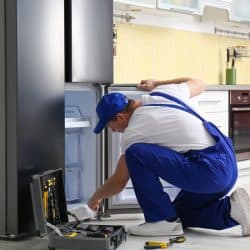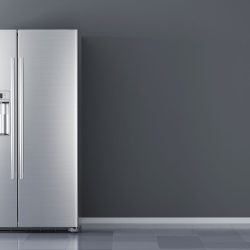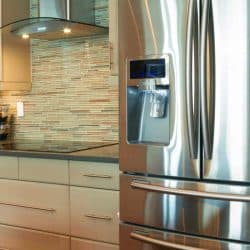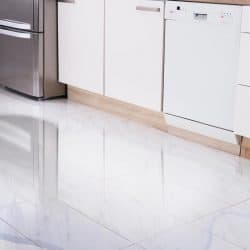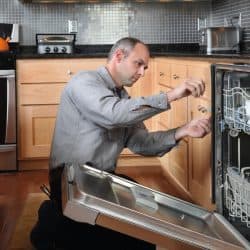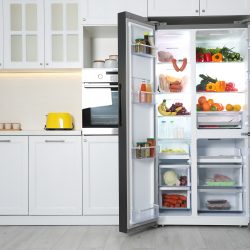It's not uncommon for some homeowners to find their refrigerator is leaking water, especially if the unit is over ten years old. But what do you do if you notice that a puddle of water suddenly surrounds your Whirlpool refrigerator? What causes this type of leak, and how do you fix it? We have researched why this issue may occur in Whirlpool refrigerators, and in this post, we will answer these questions for you.
If there is an accumulation of water at the bottom of your refrigerator, chances are that it's due to a water line, drainage leak, or condensation issue. Here are the most common reasons for these issues:
- The drain pan is unlevel
- The water line is damaged
- The water filter is leaking
- The defrost drain has a clog
- The water inlet valve is loose or broken
Though Whirlpool refrigerators are some of the most reliable units in the marketplace, they are prone to their share of issues, especially as they age. Please continue reading to learn how to troubleshoot water leakage issues and when it's time to get a new unit.
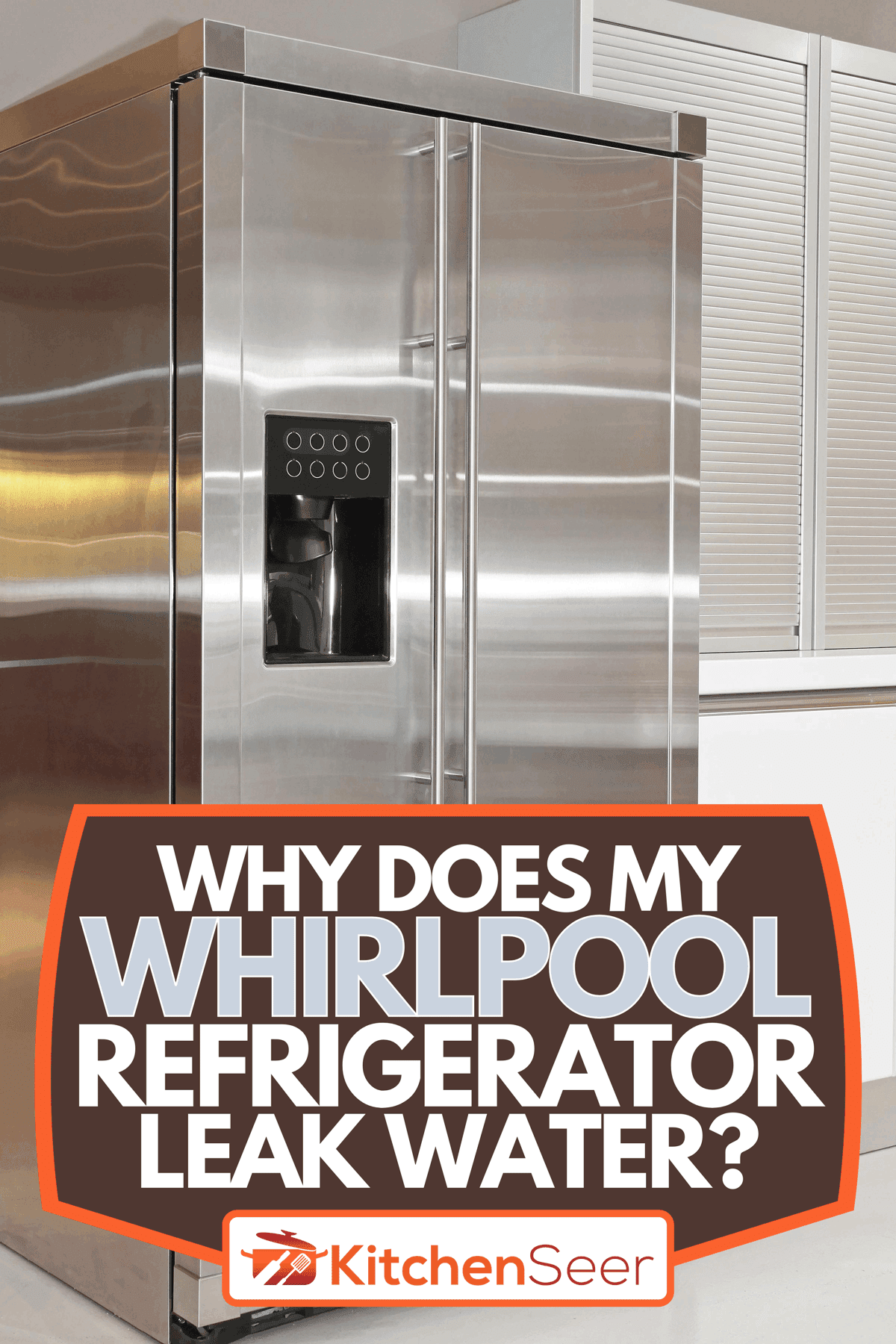
Common Reasons For Whirlpool Refrigerator Leaks
All refrigerator leaks don't necessarily spell disaster for your refrigerator or kitchen floor. Some leaks are minor, and you can repair them in minutes, while other leaks may require more complex troubleshooting and expensive repair.
However, it's always best to first try to find the source of the leak yourself, as it can save you money from having to pay an appliance technician to diagnose the issue.
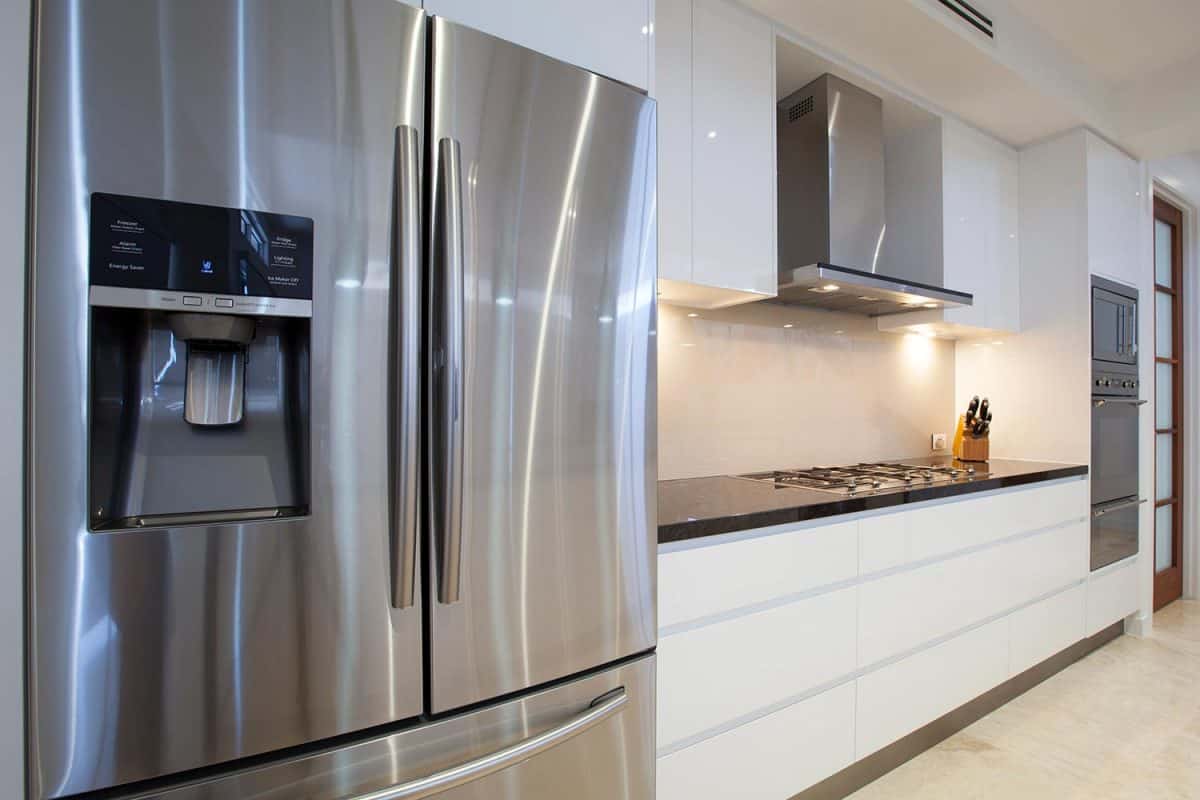
The Drain Pan is Unlevel
And sometimes, the issue can be with the drain pan. The drain pan is responsible for collecting residual water that leaks down from the various systems within the refrigerator. This water typically evaporates with aid from the condenser fan.
However, if the pan is cracked, warped, or unlevel, the water can leak from it. To see if this is the case, remove the drain pan from the refrigerator's bottom grill. It's usually located on the back of a refrigerator.
Inspect the pan for any visible signs of damage and ensure that it's installed properly. If it's damaged, it'll need to be replaced. And if it's installed improperly, be sure to set it so that it lays flush with the bottom of the refrigerator.
The Water Line is Damaged
More often than not, a leaking refrigerator has a damaged or loose water line that's causing the issue. The water line is a long flexible plastic hose that connects your home's water supply to the refrigerator so you can utilize the water dispenser and icemaker.
If the refrigerator's leak starts at the end of the waterline, chances are that the problem is with the fitting on the valve being too loose or damaged. However, if the issue is with the line itself, the line may just have a crack or puncture that's causing the leak.
In which case, the fix is relatively easy; you'll simply need to replace the hose. If the issue is with the connection, you'll need to tighten the valve. But if the valve is damaged, you'll need to replace it with a new one.
The Water Filter is Leaking
Unsurprisingly, water filters can also cause refrigerant leaks. This is another minor repair that is relatively easy to fix, and it's something that you can do yourself. If the water filter isn't in the proper position in its housing, you may notice a leak when you go to get ice or drinking water.
Other reasons for potential leaks include incorrect installation, filters that are broken or damaged in some way. Also, if you're replacing original water filters with generic-brand filters, be sure that the filters fit properly, as they can sometimes cause leaks as well.
The Defrost Drain is Clogged
If you notice the leak coming from the back of the refrigerator, chances are that it's from the defrost drain. This drain is responsible for moving water from the refrigerator's defrost to the drain pan, which is located beneath the refrigerator.
If the drain becomes clogged with water, it will overflow, resulting in puddles on your kitchen floor. Sometimes the leak can be the result of a few residual drops accumulating inside of the drain.
The quickest way to resolve this issue is to unclog the drain. You can do this yourself with hot water, or you can have an appliance technician perform the task.
The Water Inlet Valve is Loose or Broken
The water inlet valve closes and opens to provide the refrigerator unit with water and ice. You'll usually find this component located behind the lower bottom side of the refrigerator, next to the waterline. You'll need to move the refrigerator from the wall to access it.
If the valve appears rusted, damaged, or cracked, the leak is likely coming from it. If the valve seems loose, tighten it to see if this stops the leak. This is another cheap and easy fix and one that you can perform yourself in about 15 to 20 minutes.
However, if you find that this doesn't fix the issue and you've exhausted other potential culprits, you may need to reach out to a technician.
How Do you Stop Water from Leaking at the Bottom of a Fridge?
The best way to stop water from leaking from the bottom of your refrigerator is to ensure that all of the drainage components or free of damage and clogs.
This includes the drain pan, water line, water inlet valve, and defrost pan. These are the most common areas where leaks start. You'll also want to check the water filter to make sure it is in the proper position and free of damage.
Where is the Defrost Drain on a Whirlpool Refrigerator Bottom Freezer?
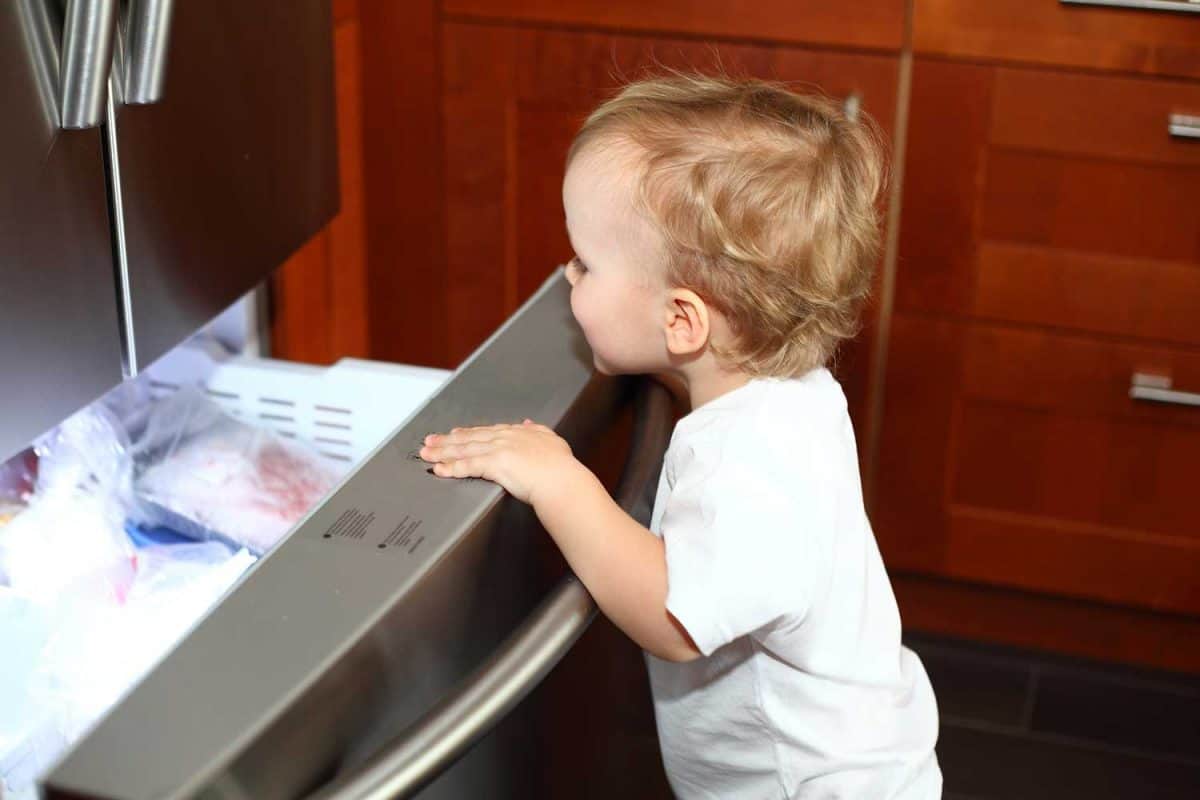
On most Whirlpool refrigerators, you will find the defrost drain near the lower back of the refrigerator on the wall. It's usually at the bottom where the ice and water from the waterlines flow. If there is a leak coming from the refrigerator, this is the best place to start your troubleshooting process.
How Do you Unclog a Whirlpool Refrigerator Drain Tube?
It's best to first refer to your user manual to determine the proper way to unclog the drain. Pull the refrigerator away from the wall to access the drain. Next, unplug the power cord from the refrigerator so that the water doesn't continue to flow while you're examining the unit.
Once you have access, untwist the water inlet valve and then, using a turkey baster, flush it with hot water to melt any ice blockages. Next, reconnect the tube by twisting it back onto the inlet valve and then plug the power cord back in.
How Do I Fix a Leaking Whirlpool Refrigerator with a Freezer on the Bottom?
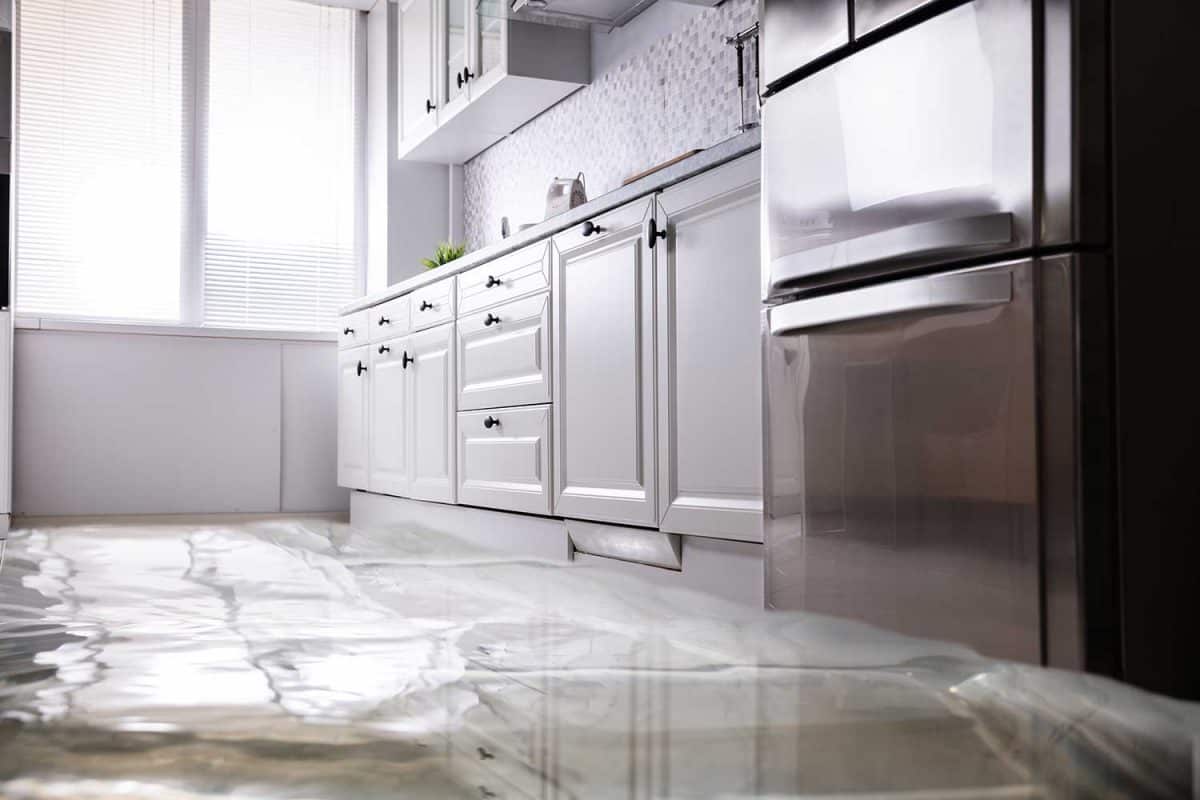
It depends on the source of the leak. These types of refrigerators may have a different waterline setup than side-by-side refrigerators. However, here are steps that you can take to troubleshoot this issue:
Empty the Drain Pan when the Humidity is High
It may be surprising to learn that environments with high humidity can cause refrigerator leaks. The humidity in the air can mix with your fridge's cold temperature, causing condensation to fill the drain pan faster than it normally would.
When the pan overflows, leaks will occur at the bottom of the refrigerator. To prevent leaks, try removing the pan and emptying it on days that are exceptionally humid.
Check your Door Seals
You'll also want to check the refrigerator and freezer door seals, as they can also cause a buildup of condensation beneath the unit. Keeping the doors open for too long will cause the motor to work overtime to keep the temperatures inside the freezer and refrigerator cool.
Check for a Blocked Defrost Drain
Even if your freezer is located on the bottom of the refrigerator, the defrost drain can still become blocked and leak water from the unit. Remove the drain from the refrigerator and flush it with hot water for 1 to 2 minutes. However, if the drain has damage, you'll need to replace it, as it can cause future leaks.
Wrapping Things Up
If you can't seem to fix the leak yourself, it's always best to leave it to the pros. And if the refrigerator is over 10 years old, you may want to consider a replacement if the repair is on the expensive side. Some repairs just aren't worth it, and you may be better off simply purchasing a new unit instead.
Before you go, be sure to check out our other posts:
How To Clean A Cuisinart Coffee Grinder
How To Freeze Cheesecake [And How To Thaw It Too]

